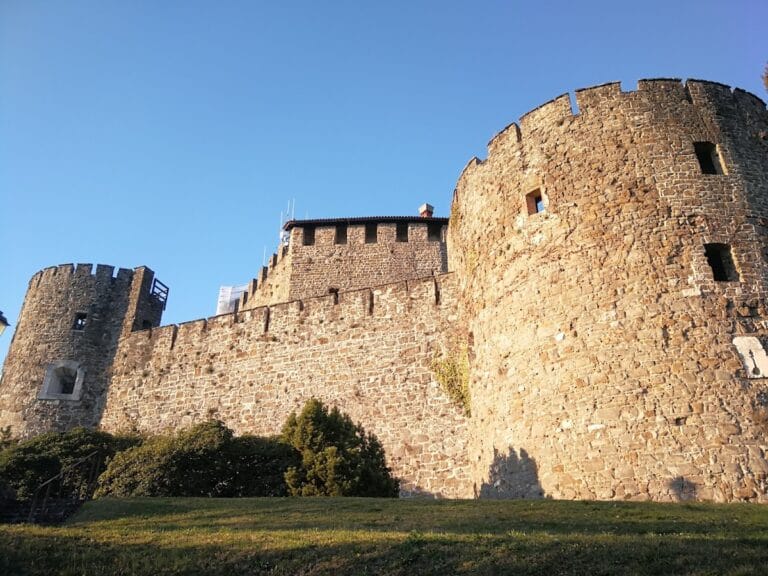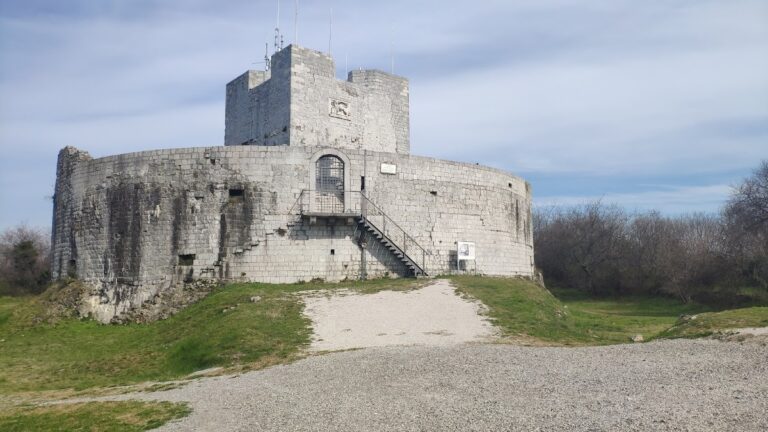Castello di Rubbia: A Renaissance Manor with Roman Roots in Italy
Visitor Information
Google Rating: 4.3
Popularity: Very Low
Google Maps: View on Google Maps
Country: Italy
Civilization: Unclassified
Remains: Military
History
Castello di Rubbia is situated near where the Vipava and Soča rivers meet, within the municipality of Savogna d’Isonzo in Italy. The site’s origins likely trace back to Roman times when a fortification may have been established to control this key strategic area.
During the 15th or 16th century, the current Renaissance-style manor was built atop earlier foundations, possibly those of a Roman military outpost. Its location was crucial for overseeing the Vipava Valley routes linking the Venetian Plain with the Danube Plain. This made the castle an important stronghold for controlling passage through these lands during both antiquity and the Middle Ages.
The castle’s first recorded owner was Count Egg. Ownership then passed in the early 1500s to the noble Torre-Valsassina family. Subsequently, the estate was acquired by Angelo Giacomo Edling before coming into the hands of the Coronini family, specifically Cipriano Coronini Kromberg, who maintained possession for several centuries.
In the early 17th century, Castello di Rubbia played a military role during the Gradisca Wars of 1616-1617. It became a headquarters in the conflict but endured severe artillery damage under the assault led by General Adem Trautmannsdorff. The castle’s military significance extended into the 20th century when it again suffered substantial destruction during World War I.
An important religious episode occurred in 1563 when Primož Trubar, a Protestant Slovene preacher, found refuge within the castle’s walls. Escaping the Counter-Reformation’s pressures, he used the site as a place to preach and conduct baptisms.
In 1872, the castle entered a new phase when Leonardo Bianchi di Casalanza purchased and restored it. He also established vineyards and a winery on the estate, which remained in his family after his passing. In the early 21st century, restoration efforts based on historical records revived the castle’s structure and winery function. The property remains privately owned and occasionally opens to the public on special occasions.
Remains
Castello di Rubbia consists primarily of a Renaissance manor erected upon 15th-century foundations that themselves incorporate remains from earlier construction phases. The layout preserves defensive walls dating back to the original fortifications, reflecting its dual residential and military character.
One of the tower’s corner stones features distinctive notches characteristic of Roman quarrying techniques, which points to the reuse of Roman materials or the presence of a Roman-built foundation underlying the medieval structure. These sections remain visible and attest to the layered history of the site.
The castle endured significant structural damage from artillery attacks during the Gradisca Wars and again in World War I. Before modern restoration, parts of the building were left in partial ruin. Restoration in the 2000s was carefully conducted with reference to historic documents that guided the rebuilding process.
Today, the castle functions as a winery and retains a notable commemorative feature: a bust of Primož Trubar mounted near the entrance, honoring his stay during the religious upheavals of the 16th century. The preservation of the defensive walls and the tower’s Roman-styled corner stones serve as in situ reminders of the site’s extensive and complex past.










